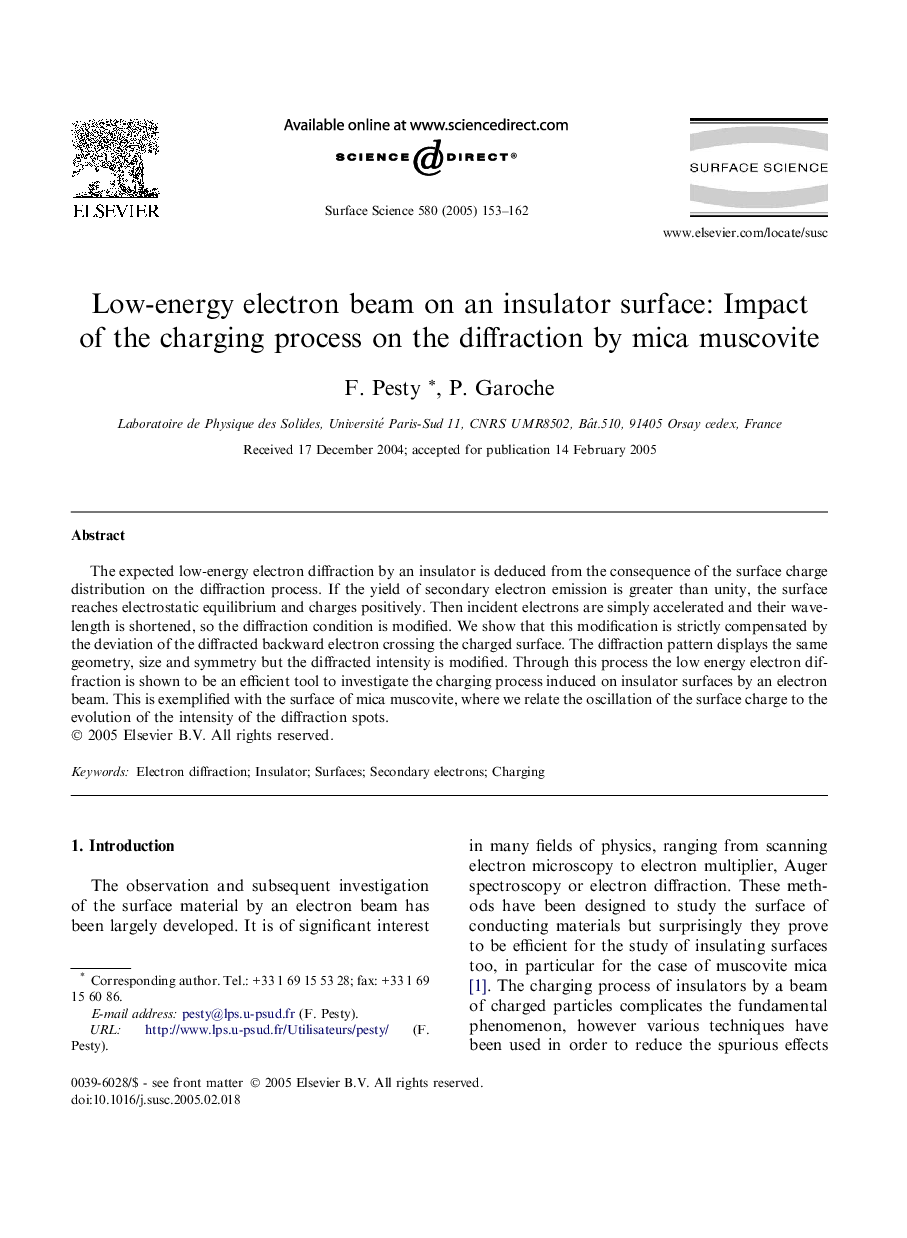| Article ID | Journal | Published Year | Pages | File Type |
|---|---|---|---|---|
| 9595590 | Surface Science | 2005 | 10 Pages |
Abstract
The expected low-energy electron diffraction by an insulator is deduced from the consequence of the surface charge distribution on the diffraction process. If the yield of secondary electron emission is greater than unity, the surface reaches electrostatic equilibrium and charges positively. Then incident electrons are simply accelerated and their wavelength is shortened, so the diffraction condition is modified. We show that this modification is strictly compensated by the deviation of the diffracted backward electron crossing the charged surface. The diffraction pattern displays the same geometry, size and symmetry but the diffracted intensity is modified. Through this process the low energy electron diffraction is shown to be an efficient tool to investigate the charging process induced on insulator surfaces by an electron beam. This is exemplified with the surface of mica muscovite, where we relate the oscillation of the surface charge to the evolution of the intensity of the diffraction spots.
Related Topics
Physical Sciences and Engineering
Chemistry
Physical and Theoretical Chemistry
Authors
F. Pesty, P. Garoche,
